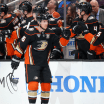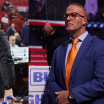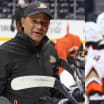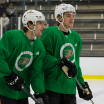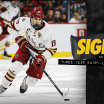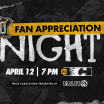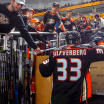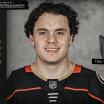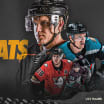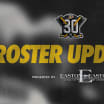VANCOUVER -- Less than 24 hours before the 2019 NHL Draft, Ducks Director of Amateur Scouting Martin Madden lets out a hearty laugh during a brief break between meetings at the team's downtown hotel. Two first-round picks (No. 9 and 29) and three in the top-39 makes this a significant draft for the Ducks, who are among the league's best when it comes to this annual selection process. Two firsts, especially, and seven picks total, has Madden rolling up his sleeves.
An unexpected down year put the Ducks in the running for a lottery pick, which resulted in the ninth overall selection. That's fine for Madden, even if the grueling season took its toll on the easygoing Quebec City native.
"We've suffered through the year, so we'll take it," he says with a chuckle. "We're happy we get to take it. We're excited about the player we're going to get. Don't get me wrong. It's a two-edged sword."
Ducks Look to Continue Draft Success This Weekend in Vancouver
Anaheim's Director of Amateur Scouting Martin Madden gives his insights as the Ducks prepare for two first-round picks in the 2019 NHL Draft
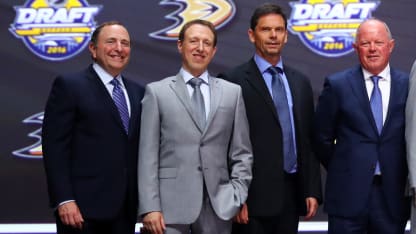
© Bruce Bennett/Getty Images
This is when Madden & Co. shines, and the numbers speak for themselves: The Ducks are the NHL's most successful team drafting players into the NHL since 2010, having done so without a top-five overall selection. In fact, Anaheim has not selected in the top five since 2005, qualifying for the playoffs in 11 of 14 seasons since then. They've selected 58 players since 2010, with a league-leading 51.7% (30 players, tied with Boston) making it to the NHL (the league average is 38%). Those 30 players have combined to play 4,810 NHL games, led by defensemen Cam Fowler (620) and Hampus Lindholm (447). Furthermore, eight of those 30 players (26.7% percent) have played 250-or-more NHL games, which also leads the league.
Madden is excited. He says the second tier in this draft (after presumed first two picks Jack Hughes and Kaapo Kakko) is larger than usual. "Different types of players, but with similar floors and ceilings in their upside and risk profiles." This, Madden says, gives the Ducks some options.
"It gives us flexibility to move up, sit where we are, or move back depending on circumstances," he says. "It might be a little harder than usual to pin down one or two guys that will be there for sure when we pick at nine. You still can narrow it down to three or four, and have the added flexibility of knowing there are probably three more that we'd be really happy with. In that respect, there might be a little bit more variance. There are different types of players even though they have the same potential."
Is there a point, if any during this draft, where the organization's philosophy might shift from taking the best player available to addressing a positional need? Madden doesn't think so.
"The only time we've really done that was when we had a lot of defensemen," he says. "We really liked that group of young defensemen coming. We've used some of those players as assets over the last two years. I think our prospect pool is relatively balanced. We added some goalie prospects in last year's draft, so I think we've got some depth there. I don't see that being a major factor in our selections this year. We're going to stick to the player we like the best at that point.
"Style might come into play a little bit more," Madden adds. "Maybe we'd like to diversify the style of our prospect pool. I don't think position will play a huge part."
There was some uncertainty and complexity regarding the club's second first-round pick, as it rode on the performance of the Sharks and Blues in this year's postseason. The condition was that the Ducks would get the higher of the two picks - both picks then owned by the Sabres. (The Ducks acquired this pick in a trade that included defenseman Brendan Guhle in exchange for defenseman Brandon Montour.) Eventually it landed on 29, but it could've been as high as the late teens. Because of this, Madden and his staff adjusted their game plan.
"At some point, it looked like it could be as high as 17," he says. "We were also a period away from it being 20. Ends up being 29. What are you going to do? You can't focus too narrowly on a particular type of player in March or April when you know there's still lots of hockey to be played, and that pick is still very much in flux in terms of where it's going to land."
A late first-round pick is nothing new to Madden and the Ducks. They selected Isac Lundestrom last year with the 23rd overall pick, and drafted Max Jones and Sam Steel with the 24th and 30th overall selections in 2016, respectively. In 2017, they took Jacob Larsson 27th overall. Rickard Rakell was chosen with the 30th overall pick in 2011, and the Ducks took John Gibson nine spots later in the second round at No. 39.
"We'll end up with a lower-ranked player from the group we were looking at, but we'll still end up with a good player at 29 with the possibility of trading up, as well," Madden says. "We'll see in the low 20s, like 21 or 22, how that shakes out. There might be two guys we really like that are still on the board, so we'll see where that takes us."
Madden says he kept a close eye on the U.S. National Team Development Program. As it stands, this could be the most prosperous crop of NTDP players the league has ever seen. While Hughes is projected to go first overall, the next wave of Americans from the program include players like Alex Turcotte, Trevor Zegras, Cole Caufield, Matthew Boldy and Cam York. It is expected that up to seven players from the program could go in the top 12.
"Special group, special team even though they fell short at the U-18s," says Madden. "It was an outstanding national development team. Great group of forwards, especially, but some really good defensemen, as well. Real high-end goalie. They got to push themselves and practice for two years.
"Even though they ran through the competition in the USHL this year, maybe a little too easily, they were pushing themselves in practice. They got much better as a group because of that."
Needless to say, Madden sees a lot of potential in that group. "They've got some high upside," he says. "All those top guys are really talented, skilled and creative. Good mobility. They're a bunch of really good players with different personalities in terms of their play and off-ice personas, as well. But it's a really good group."

